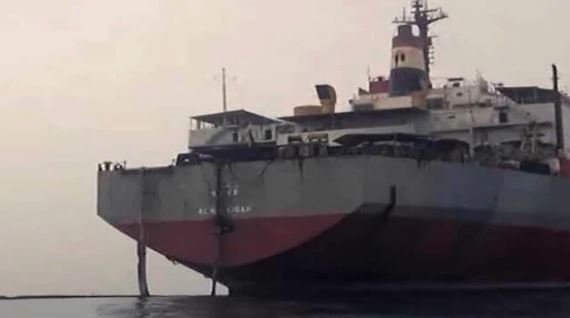The United Nations released additional details and its timeline for the planned effort to prevent an environmental disaster from a decrepit tanker that is serving as an FSO off the coast of Yemen. UN officials have been seeking a solution to the FSO Safer for a few years, but they believe the current ceasefire agreement along with acceptance of the latest plan provides the best chances for success.
David Gressly, the UN Humanitarian Coordinator for Yemen, outlined the plans to address the threat posed by the FSO Safer, which he continues to describe as a time bomb sitting off Yemen’s Red Sea coast. The UN official pointed out that the 45-year-old floating storage and offloading facility continues to hold 1.1 million barrels of oil or four times the amount of the Exxon Valdez. The FSO Safer ceased operations in 2015 and for the past few years has only had a skeleton maintenance crew with limited resources. The company that owns the vessel said that it no longer has the means to provide adequate maintenance and officials have repeatedly pointed out the lack of basic functions such as the proper venting of the tanks.
Under the plan accepted earlier this year by the Houthi rebels, the UN will offload within the next four months the oil stored on the Safer to a temporary vessel that would be placed alongside the FSO. They are also continuing to look for a permanent replacement that would be in place within 18 months to hold the oil while the Safer would ultimately be towed away for demolition.
“My particular concern is really we need to finish this operation by the end of September to avoid the turbulent winds that start in the latter part of the year…increasing the risk of a break-up, and also increasing the risk in conducting any operation,” said Gressly. “So timing is tight.”
The Yemeni government recently also indicated its approval of the project. The Gulf Cooperation Council, a regional body that is part of the coalition with the Yemeni government supported by Saudi Arabia has also endorsed the UN’s plan.
Gressly is now in the region organizing meetings with different officials seeking financial support for the UN’s plan. The Netherlands’ ambassador has also been instrumental in the efforts and has pledged his government’s support. After a meeting yesterday, the United States’ envoy to Yemen, Tim Lenderking, also pledged cooperation.
The Netherlands has agreed to help the UN as a co-organizer of a “pledging conference” scheduled for May. The UN estimates that it needs to raise $80 million to complete the plan. However, Gressly points out the economic alternative could be far worse costing at least $20 billion for a cleanup if the FSO Safer fails and causes a catastrophic oil spill.
UN officials point out that a major oil spill would likely close, at least temporarily, the ports of Hudaydah and Saleef, which are critical entry points for food, fuel, and supplies. “If it were to happen, the spill would unleash a massive ecological and humanitarian catastrophe centered on a country already decimated by more than seven years of war,” said Gressly.
An oil spill would have a severe environmental impact on water, reefs, and life-supporting mangroves while also placing Saudi Arabia, Eritrea, Djibouti, and Somalia at risk. They also point to the potential for damage across the Red Sea and the possible disruptions to shipping through the Bab al-Mandab Strait, which is also a passageway to the Suez Canal.
There had been previous agreements between the UN and Houthi that called for an inspection of the FSO Safer, but it later collapsed with each side blaming the other for failing to honor the agreement. The current lull in hostiles is seen as providing a window to complete the current plan.
Source: The Maritime Executive






